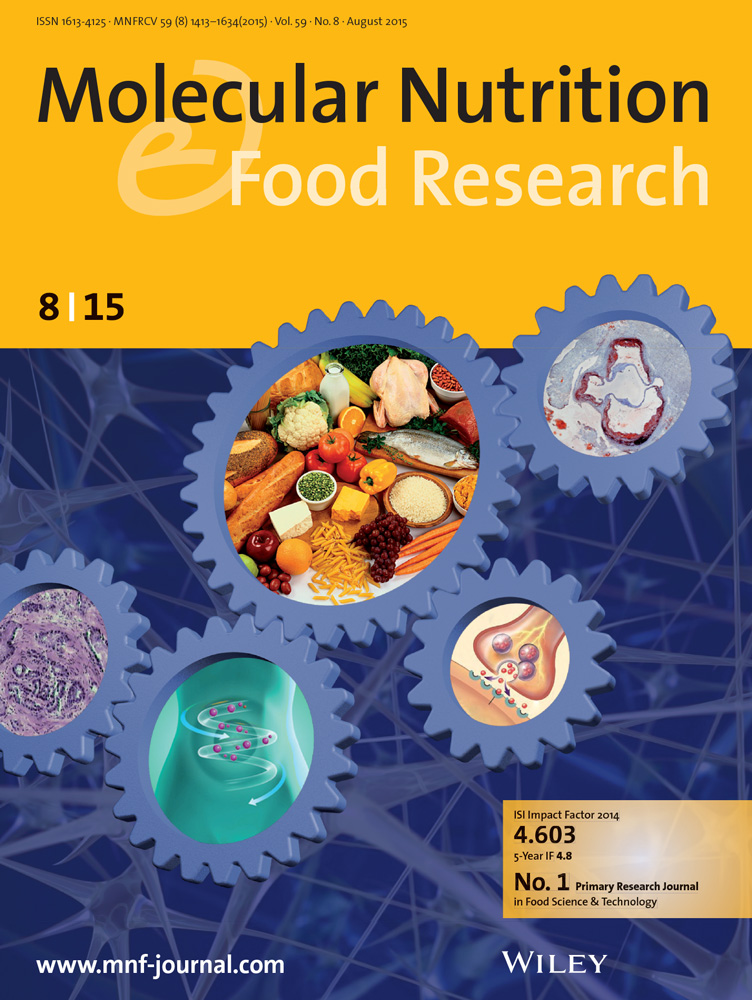Extraction and Purification of Tropomyosin From Crabs Scylla olivacea and Charybdis ferriatus: Assessment of Allergenicity and Sensitizing Capacity Using Animal Experimental Model
IF 4.2
2区 农林科学
Q1 FOOD SCIENCE & TECHNOLOGY
引用次数: 0
Abstract
Tropomyosin is a significant allergen found in invertebrates and is recognized as one of the primary triggers of food‐induced anaphylaxis. Though many researchers have done the characterization of allergic tropomyosin, a comparative analysis of the allergenicity of vertebrate (porcine) and invertebrate (crab) tropomyosin is still lacking. The present study aims to study the differences in IgE, tropomyosin‐specific IgE, and histamine levels between vertebrate (porcine) and invertebrate tropomyosin (crab) using an animal experimental model. Tropomyosin was extracted from two selected crabs, marine water (蟹蟹蟹蟹中原肌球蛋白的提取纯化:动物实验模型的致敏性和致敏性评价
原肌球蛋白是一种在无脊椎动物中发现的重要过敏原,被认为是食物性过敏反应的主要触发因素之一。虽然已有许多研究者对过敏性原肌球蛋白进行了表征,但对脊椎动物(猪)和无脊椎动物(蟹)原肌球蛋白致敏性的比较分析仍然缺乏。本研究旨在通过动物实验模型研究脊椎动物(猪)和无脊椎动物(蟹)原肌球蛋白的IgE、特异性IgE和组胺水平的差异。原肌球蛋白从海水蟹(Scylla olivacea)和淡水蟹(Charybdis ferriatus)中提取。用蟹原肌球蛋白处理的小鼠组观察到高水平的全身过敏反应。此外,ELISA(酶联免疫吸附法)分析显示,IgE、原肌球蛋白特异性IgE和组胺水平较高。组织病理学检查显示,蟹原肌球蛋白组小鼠肝脏和胃肠道区域发生变化。转录因子如T - bet、GATA - 3和Foxp3的数量变化也通过基因表达分析进行评估。GATA‐3’转录因子的存在也在螃蟹原肌球蛋白处理的小鼠脾脏中被发现。本研究有助于更好地诊断和治疗食物过敏,特别是贝类过敏。
本文章由计算机程序翻译,如有差异,请以英文原文为准。
求助全文
约1分钟内获得全文
求助全文
来源期刊

Molecular Nutrition & Food Research
工程技术-食品科技
CiteScore
8.70
自引率
1.90%
发文量
250
审稿时长
1.7 months
期刊介绍:
Molecular Nutrition & Food Research is a primary research journal devoted to health, safety and all aspects of molecular nutrition such as nutritional biochemistry, nutrigenomics and metabolomics aiming to link the information arising from related disciplines:
Bioactivity: Nutritional and medical effects of food constituents including bioavailability and kinetics.
Immunology: Understanding the interactions of food and the immune system.
Microbiology: Food spoilage, food pathogens, chemical and physical approaches of fermented foods and novel microbial processes.
Chemistry: Isolation and analysis of bioactive food ingredients while considering environmental aspects.
 求助内容:
求助内容: 应助结果提醒方式:
应助结果提醒方式:


